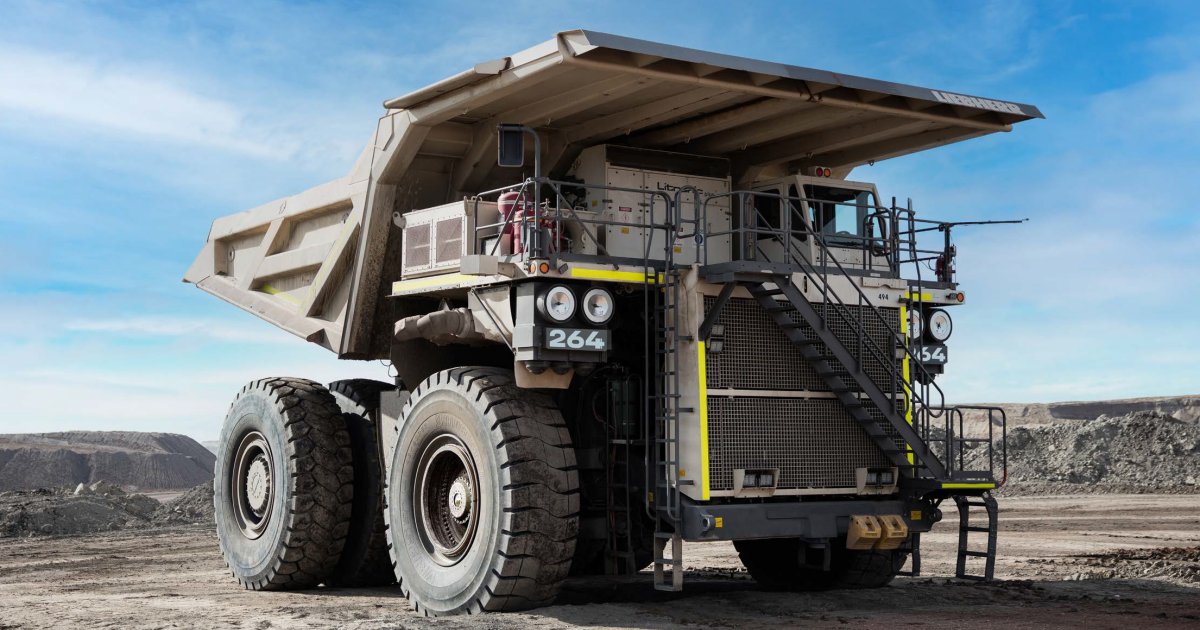
WAE Technologies has delivered a really big battery to Australia – said to be the largest of its kind – for a really big prototype zero-emission battery electric mining haul truck.
As electric vehicles go, this one will really stand out from the pack; quite literally. The battery powered truck being developed by Fortescue Future Industries and equipment manufacturer Liebherr is a modified Liebherr T 264.
A conventional T 264 is huge – 8.6 metres wide, 14.2 metres long and 7.2 metres high with the dump body on. Able to carry a payload of 240 tonnes, a T 264 truck weighs in at 176 tonnes. As you’d expect, the battery system supplied by WAE Technologies is also huge.
The 1.4MWh1 prototype power system weighs 15 tonnes, measures 3.6m long, 1.6m wide and 2.4m high. It’s made up of eight sub-packs, each consisting of 36 modules – all of which are individually cooled and each with its own battery management system. The re-jiggered T 264 will have the ability to fast-charge in 30 minutes and to “regenerate power as it drives downhill”. Once operating in the field, it will be charged using renewables.
“The battery system, designed for our zero emission battery electric mining haul trucks is an important part of our strategy to reach real zero terrestrial emissions (Scope 1 and 2) across our iron operations by 2030,” said Fortescue Future Industries CEO Mark Hutchinson.
Also big is the number of people behind this innovation – a team of 50 engineers and technicians are involved.
After the battery is assembled and installed in a T 264 at Fortescue’s workshop in Perth, the vehicle will be transported to the Pilbara region for testing this year.
Williams Advanced Engineering (now known as WAE Technologies) was acquired by Fortescue Future Industries last year, a move Fortescue said was an important step in its transition to a global green energy and resources company. Commenting on the T 264 project, WAE Technologies CEO Craig Wilson said:
“This is an inspiring example of what can be achieved combining Fortescue’s pioneering green energy vision for its global vehicles and WAE’s extensive expertise in advanced batteries.”
Big Trucks, Big Batteries, Big Wind And Solar Power
Fortescue is investing USD $6.2 billion to realise its net-zero by 2030 goal across all its terrestrial iron ore operations. As well as slashing emissions, the company will also see significant savings on diesel, gas and carbon offset purchases (and perhaps maintenance?). Fortescue predicts these savings will result in the payback of capital invested by 2034 based on prevailing market prices as at September last year.
In February last year, Fortescue released plans for a 5.4 gigawatt wind and solar project to power the company’s iron ore operations in Western Australia’s north-west (and more recently, to produce green hydrogen). The Uaroo Renewable Energy Hub would be built on the Uaroo and Emu Creek Pastoral Stations, which are located 120 kilometres south of Onslow.
Already helping to power Fortescue operations is the Alinta Fortescue Solar Gas Hybrid Project, which was developed and is owned and operated by Alinta Energy. The facility, located at the Newman gas-fired power station in the Pilbara, consists of 60MW AC of solar PV and a 35MW battery storage system.
Footnotes
- 1.4MWh of storage capacity is equivalent to the usable capacity of around 103 Tesla Powerwalls. ↩

 RSS - Posts
RSS - Posts



Most mining trucks in Australia are diesel electric, so going all electric is not as large a jump as it may seem. This has plenty of potential to reduce oil consumption by Australian mining.
Here is another battery electric dump truck (it is not quite as large though), due to how it is used it never needs to be plugged in. https://www.greencarreports.com/news/1124478_world-s-largest-ev-never-has-to-be-recharged